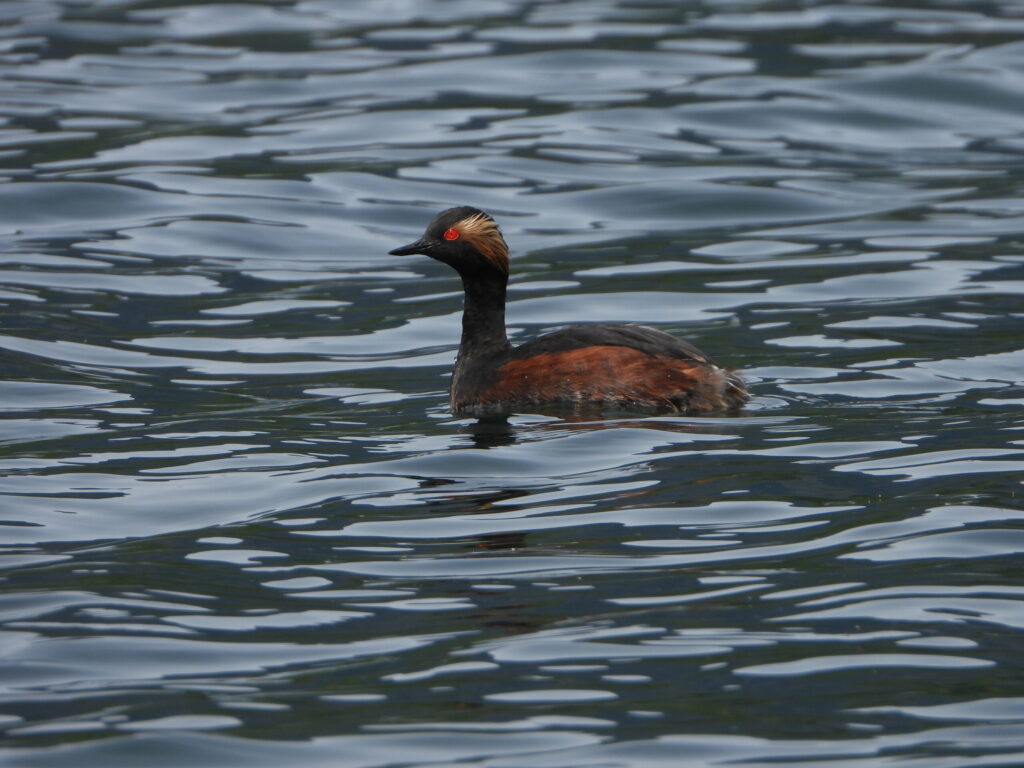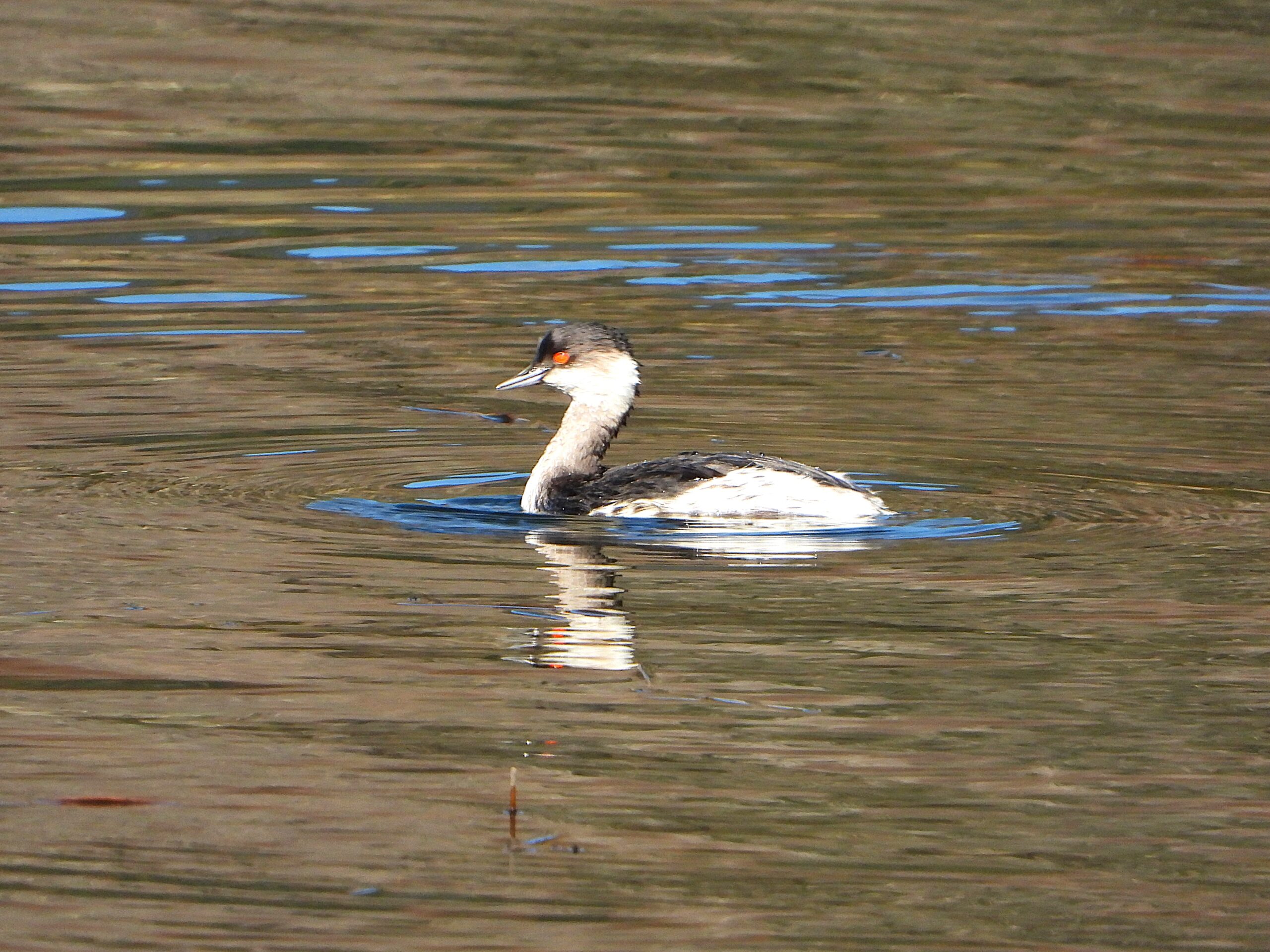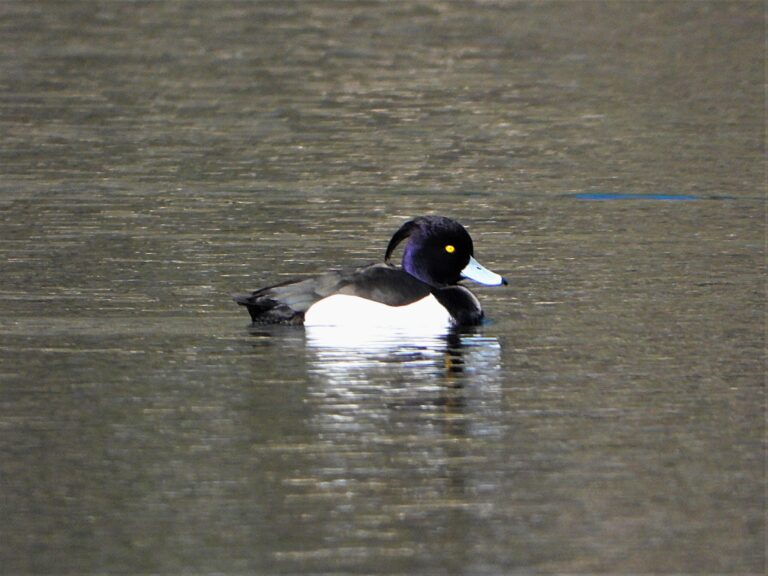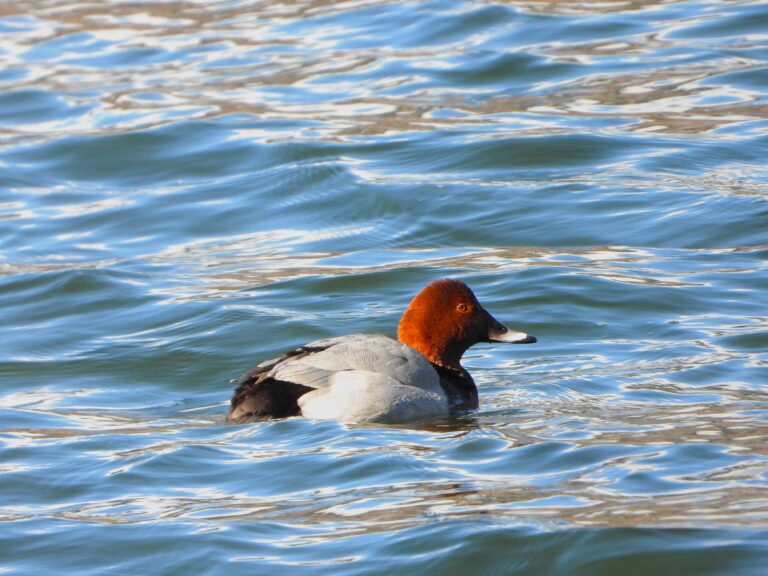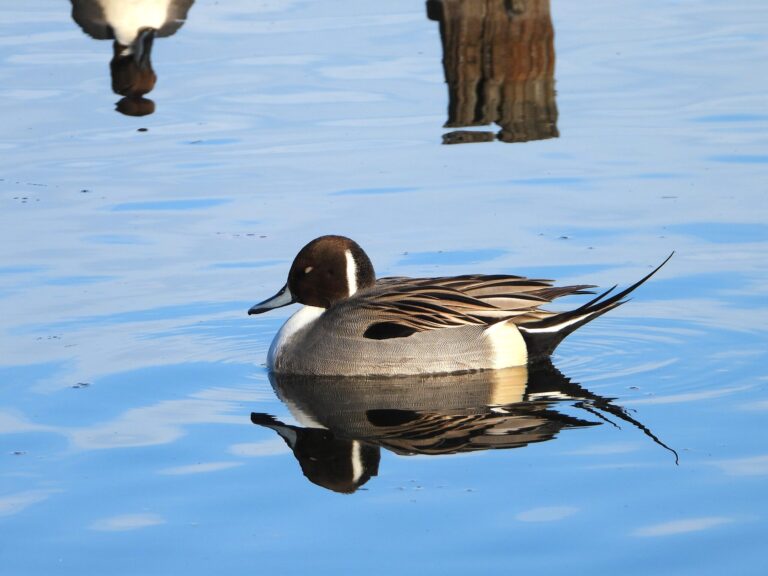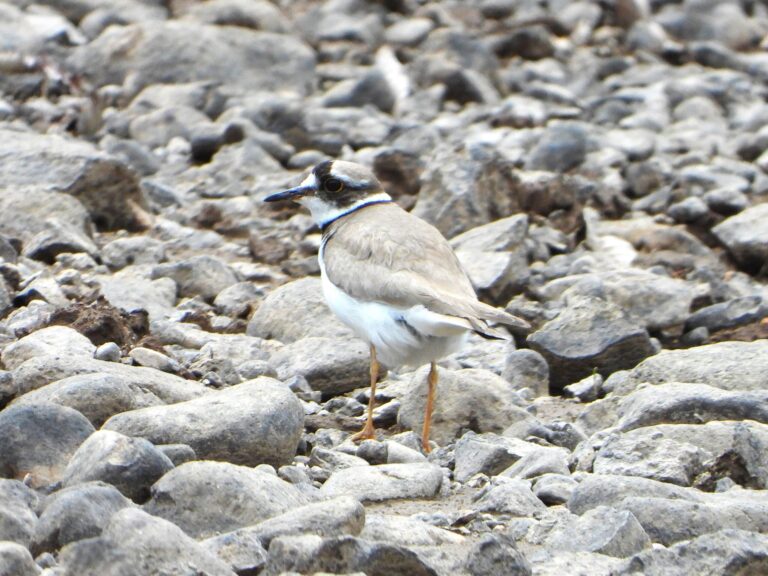Black-necked Grebe (Podiceps nigricollis) – Wildlife of Japan
Introduction
The Black-necked Grebe (Podiceps nigricollis) is a small diving bird of the grebe family. It appears in Japan mainly as a winter visitor, seen on calm coastal bays, estuaries, and large lakes. Although widespread across Eurasia, Africa, and North America, the individuals found in Japan migrate from northern Asia to overwinter on the country’s waters.
Appearance
This species measures about 28–34 cm in length with a wingspan of 56–60 cm. In winter, it shows a white face and throat contrasting with dark gray upperparts and a black crown. During the breeding season, the plumage transforms dramatically—its head and neck turn black, flanks become deep chestnut, and golden tufts spread from behind the eyes, which glow bright red. The bill is thin, straight, and slightly upturned—one of the best features for distinguishing it from the Great Crested Grebe (P. cristatus).
Habitat & Distribution
In Japan, the Black-necked Grebe is recorded as a winter visitor from around October to April, most frequently in Hokkaido, northern Honshu, and coastal regions of western Japan. It is often seen in bays, estuaries, lagoons, and large freshwater lakes such as Lake Biwa and Kasumigaura.
Occasionally, a few individuals remain into early summer, sometimes showing full breeding plumage—especially in northern regions such as Hokkaido. However, no confirmed breeding has ever been recorded in Japan. The species breeds in northern Eurasia and North America during summer and migrates south for the winter.
Behavior
The Black-necked Grebe is an agile underwater hunter, using its lobed toes for propulsion while chasing prey. It can stay submerged for several seconds and resurfaces quietly some distance away. When alarmed, it tends to sink low into the water instead of flying. In winter, it is usually solitary or found in small loose flocks, spending much of its time resting or preening on calm water.
Diet
This grebe feeds mainly on small fish, aquatic insects, crustaceans, and larvae. While quantitative studies in Japan are limited, field observations indicate similar feeding behavior to other grebe species—catching prey underwater and often swallowing it before resurfacing.
Reproduction
The species breeds in northern Eurasia and North America, where it constructs a floating nest made of aquatic vegetation anchored to reeds. A typical clutch contains 3–5 eggs, incubated by both parents. There are no verified breeding records in Japan; individuals seen here are strictly wintering or lingering visitors.
Conservation
According to the IUCN Red List, the Black-necked Grebe is classified as Least Concern, with a generally stable global population. In Japan, it is regionally common in winter but listed on some prefectural Red Data Books as a species of minor concern due to habitat degradation and human disturbance. Protecting clean, quiet coastal wetlands and large lakes is vital for maintaining its wintering populations.
Author’s Impression
While observing the bay on a calm winter day, I noticed a small bird repeatedly diving and resurfacing. Through my binoculars, I realized it was a Black-necked Grebe. Its constant dipping and emerging on the gentle water looked adorable—a quiet rhythm of life playing out across the still sea.
I have also seen this species during summer, showing traces of its dark breeding plumage. Watching it outside the usual season made me appreciate its resilience and quiet beauty even more.
